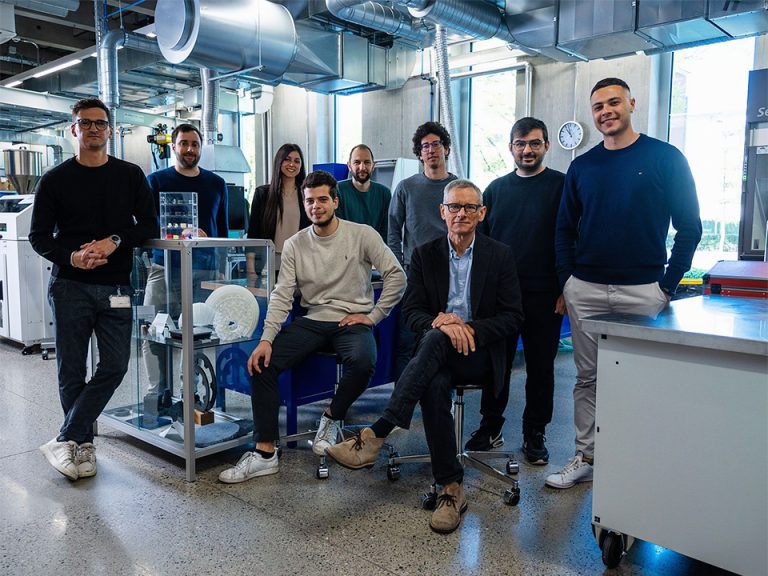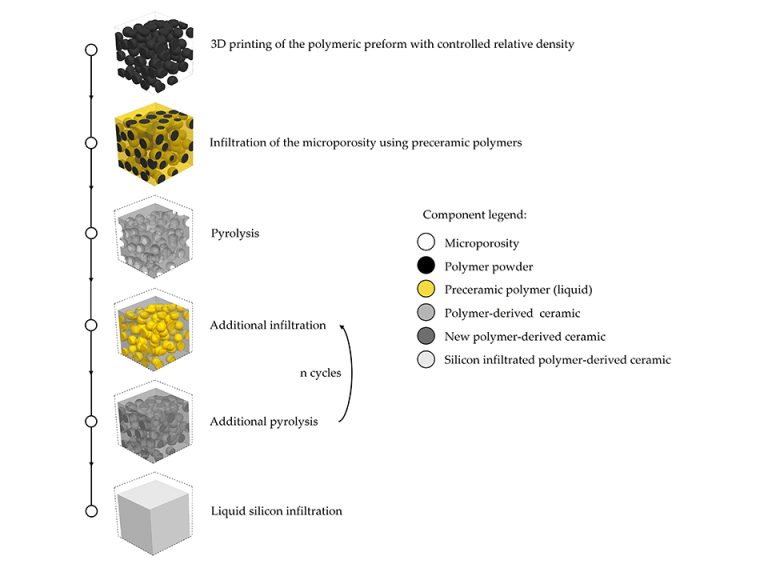In a groundbreaking PhD project at the SUPSI University in Switzerland, Marco Pelanconi developed a novel hybrid additive manufacturing process to fabricate complex ceramic structures. The Sintratec Kit played an essential role in his research.
A research powerhouse from Switzerland

During the last 20 years, the Hybrid Materials Laboratory (HM Lab) of the University of Applied Sciences and Arts of Southern Switzerland (SUPSI) has been conducting cutting-edge research on ceramics. In 2019, the HM Lab head Professor Alberto Ortona already illustrated the potential that porous 3D prints possess for ceramic materials. Now, one of Professor Ortona’s doctoral candidates at the University of Padua, Marco Pelanconi, has successfully defended his PhD thesis in this very research area.
A novel hybrid additive manufacturing process

As his dissertation project, Pelanconi optimized the above mentioned process to produce complex ceramic architectures through additive manufacturing. The approach involves 3D printing of polymeric preforms with high microporosity through selective laser sintering (SLS), combined with infiltration with preceramic polymers. Then, pyrolysis is used to obtain a polymer-to-ceramic conversion at around 1000°C. A final densification is performed via molten silicon infiltration to achieve ceramic parts with high density.

Porosity control with open parameters
The Sintratec Kit – to this day the world’s first and only assembly kit in the field of SLS – took center stage in Marco Pelanconi’s research thanks to the 3D printer’s open parameters. «The Kit allowed us to change a lot of printing parameters, including powder surface temperature, layer thickness, laser speed, hatching spacing, and more, making it easy to control the porosity of the 3D printed parts», Pelanconi explains. By varying these factors, the material engineer was able to achieve an ideal porosity and thus a high part quality. The right porosity is crucial for further infiltration.
Creating complex ceramic architectures

Potential for a multitude of industries
Why are complex ceramic architectures so promising? «These classes of materials offer unmatched thermo-mechanical properties that cannot be provided by steels, such as high temperature resistance, high oxidation resistance, high thermal shock resistance and high strength», emphasizes Pelanconi. Therefore, ceramics are well suited to be used in extreme environments, e.g., in heat exchangers, catalyst supports, thermal storage, burners, or aerospace. This innovative approach, carried by Marco Pelanconi within the HM Lab, could be exploited by the high-tech industry thanks to the many different ceramic materials obtainable from a wide range of preceramic polymers.

Subscribe to AM Chronicle Newsletter to stay connected: https://bit.ly/3fBZ1mP
Follow us on LinkedIn: https://bit.ly/3IjhrFq
Visit for more interesting content on additive manufacturing: https://amchronicle.com



